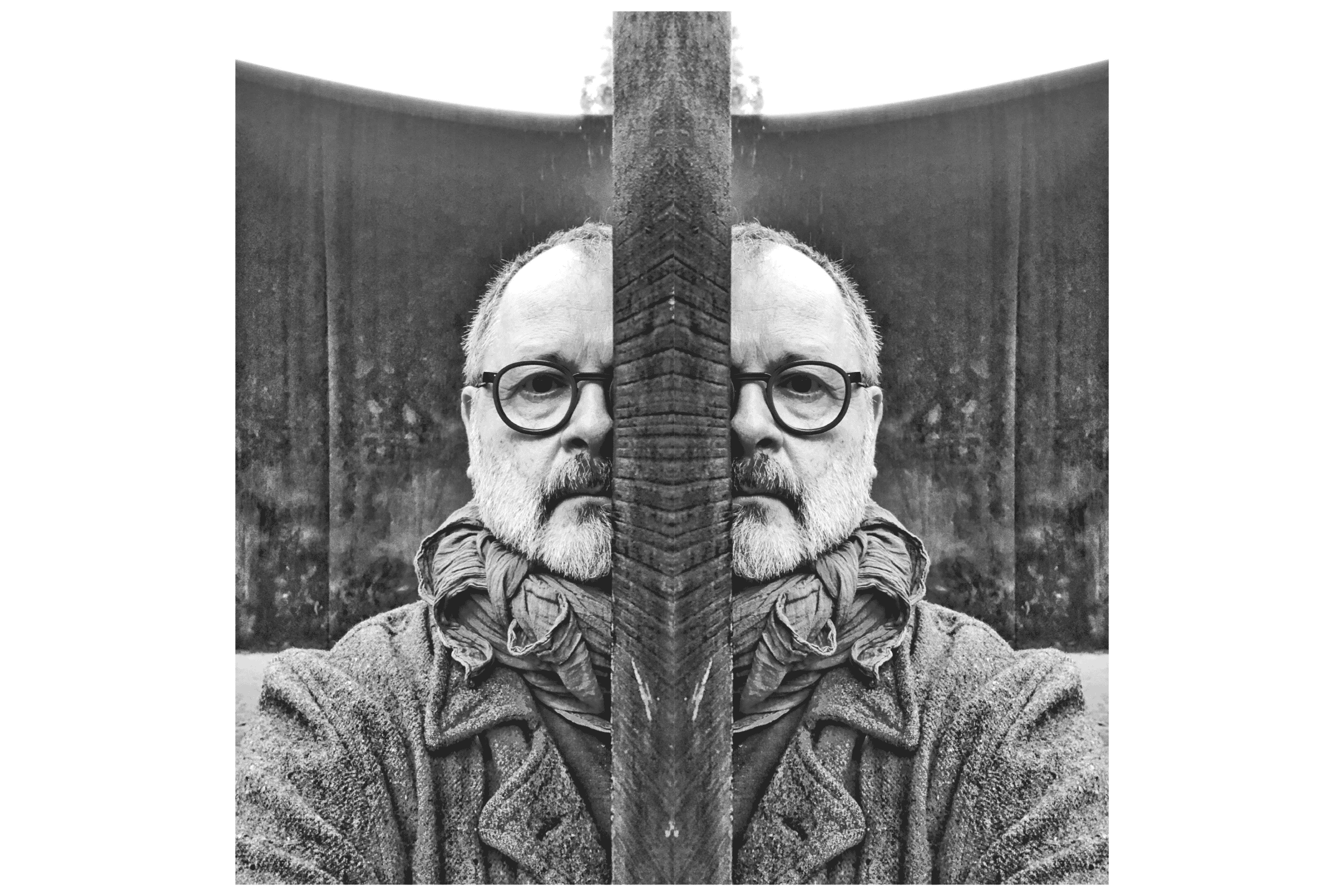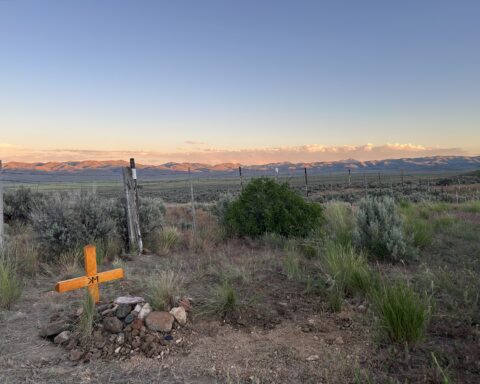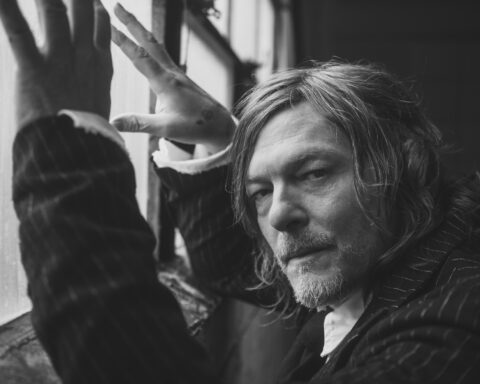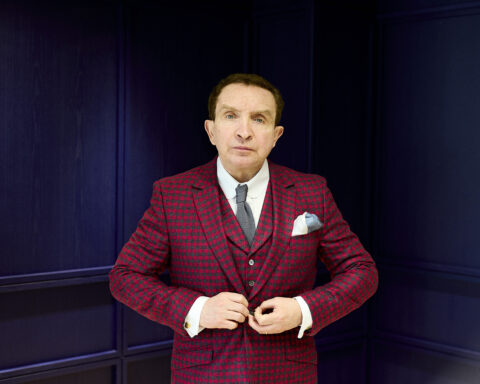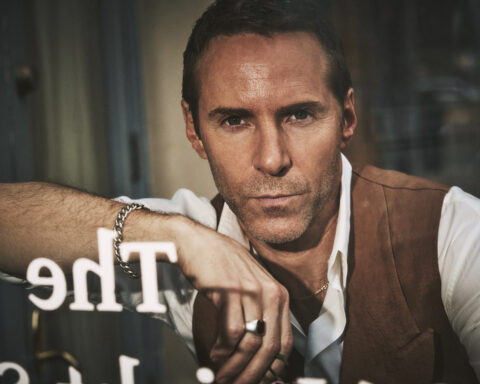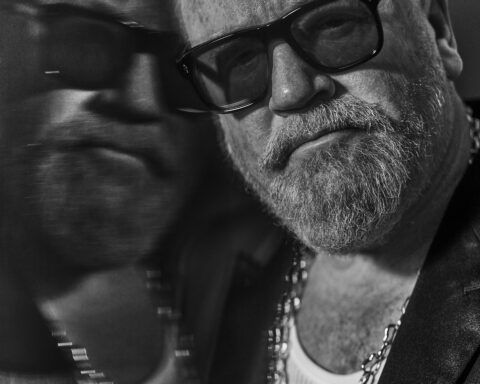Lockdown has been tough on creativity in many ways, but it has also been a unique opportunity for many to find more time to look at, and record, life from a different perspective.
Frank Ockenfels 3 has used journaling as an outlet to create and inspire his work throughout his career, which saw him become one of the most respected portrait photographers in the world after he collaborated with David Bowie, a working relationship that lasted almost a decade. He has since photographed hundreds of notable actors, musicians, directors, and politicians, from David Lynch to Kurt Cobain to Barack Obama.
We don’t need to be a famous artist, or even think of ourselves as artistic, to benefit from journaling. Scribbling, doodling and expressing our thoughts and emotions on paper is good therapy for us all. Most of us enjoyed art as children, but work, life and self-doubt can get in the way of that pleasure and expression as we grow older.
But there is creativity within all of us. And whatever we were told as kids, we don’t have to color inside the lines. Taking the time to do something creative for ourselves is important for unlocking passion and innovation, and fulfillment in all parts of our lives.
Here we speak to Frank about his process, and explore the works in his quarantine project. Beginning with his journaling and collages, twisting and turning through experimental photography, painting, sketching and writing, he embraces the unexpected and is always open to the accidental. And now, during seven months in lockdown in his Los Angeles, California, home, the renowned photographer, artist and director, has found his journaling as essential to his personal well-being and creativity as ever.
How have you adjusted to creating during lockdown?
I’ve kept journals and over the years they’ve always kind of expressed what my state of mind was at the moment. I did start keeping a corona journal just because I thought, what are the elements that make up this state of mind? Because a lot of this stuff is from travels. Like I’ll peel paper off of walls or whatever. And with corona, I was home all of a sudden. I had to start going through my past and then looking at things and reading. You’re reading newspapers, you’re looking at things coming up on your screen, you’re printing things out, you’re creating drawings or paintings that basically relate to what you’re going through. Even a PPE mask ended up being part of a journal at a certain point, just because that’s what your everyday life is. You start to basically absorb what is, and then start throwing it up on the pages of the journal.

© Frank Ockenfels 3
Do you miss traveling?
Yeah, I do. My wife more so. We were about five months in and she looked at me and she said, “Do you realize this is the most you and I have ever been near each other in our marriage?” And I was like, “Are you saying that with a smile on your face? Like, Oh, this is great. Or Jesus, get the hell out of the house?!”
When do you find is your best time to work or is it just whenever? Are you better in the morning? Are you better in the evening?
On any given day, I wake up in the morning, I get coffee, and I have to walk past the table that has all my journals and all the scraps of papers or things I’m working on or boards. Some mornings it pulls me in, I just stop. I go, “OK, well, this morning is not going to be about going upstairs and working on the thing I’m supposed to be doing.” And I’ll spend a little time working on something else. It’s probably whenever. I find it hard to basically say, “Tomorrow, I’m going to, at five o’clock, sit down and do something.” I used to be very nocturnal. I try to leave pockets of creativity or things that I’m interested in around the property. That makes it easy for me to keep motivated, keep moving forward.
The only set date that I have every single week is Guy Garvey’s radio program on BBC6. And so every Sunday at four o’clock, I’m in my studio. I turn Guy Garvey on and listen to him talk and present the music of the week, and what he’s thinking about, all those little things. And that basically makes me creative. Makes me want to work on things. Some really nice pieces have come out of listening to him on a Sunday afternoon with a glass of wine, just real simple. It’s kind of funny, but that’s my only really set.

© Frank Ockenfels 3
How have you found isolation?
Probably not as bad as others. I have a lot of friends who live in New York and different places that are in small spaces. Having a half an acre of property with two buildings on it, where the four of us can separate from each other pretty easily, it’s a blessing. We’re very lucky that way. In general Diane and I aren’t really people who go out a lot. When we do entertain people they usually come here, and we’ll make a meal and we sit outside. That part is kind of sad that we can’t have people over as much. The groups of people we used to have over. That part is hard.
Have you found yourself being more productive in regards to your art in isolation, or is it just about the same rhythm?
I would say more so because I have more time. I have less people asking me to do things. I have a couple of exhibitions coming up so I’ve had the time to work on that, and I’ve had the time to go through my archives. Creatively it’s been great because I don’t have to worry if I want to spend a full day on something and I start painting or drawing or collaging or even taking pictures. I’ve come up with a whole process of shooting off of the computer screen. Trying to find some way to keep photographically relevant and keep my brain working in that way.

© Frank Ockenfels 3
Did you go to art school? Did you have a mentor? And which came first, photography or painting? And at what age?
What’s kind of funny is I went to art school, I went to SVA (School of Visual Arts) in New York City. And I actually graduated out of there but I wasn’t really sure what I wanted to do. I was a fan of certain photography, but I wasn’t really sure what kind of photography yet. I was still throwing everything against the wall, until you find your vision and what makes you feel like you’re actually answering the questions in your mind. I got lucky in my early days of coming across photographers whose energy and whose excitement for photography was so unusual in how they approached their job. There was a guy named Josh Greene, and we shot food and interiors. If you think about that, that had nothing to do with what I was doing, but his approach to it, his passion for life and the way he would shoot and be excited, you had to get pulled into it. There was no question. Then I got to work for guys like Jeff Dunas, and he’s unbelievable. He was an unbelievable teacher and open to being supportive. Both guys were very giving on how they were approaching it. It wasn’t like, “I have a big secret and now I’m going to teach it to you.”
It was a very different time, and neither one of those were painters. They were just amazing with light and taught me about looking and seeing. Then I came across Duane Michals. And just the way he would write poetry or stories across photographs suddenly started making sense to me. The photographs speak.
Also there’s Ralph Steadman, then walking through the sculptures of Richard Serra and seeing how light moves across space and time, and what you feel like when you’re in those spaces and how it makes you move. All that related back to taking a picture for me suddenly.
Then suddenly Peter Beard has that show in Soho and wow. I don’t keep journals like that, but I get it. I get where this all comes from. It all kind of snowballed. I think the painting, the drawing and the collaging came from being… I don’t want to say bored, just needing [to say] what’s next, what’s next.

© Frank Ockenfels 3
And what age were you at that point?
I was in my early 30s when I really started doing any kind of painting and drawing. Really severely pulling paints out. Otherwise it was collages prior to that. When I met my wife, she would just do things. She was a hairstylist at the time when I met her. I’d visit her in Los Angeles and she’d sit in her backyard and she’d decide to strip a desk that she bought of all the paint. Then she’d turn around and she’d just do other things. It’s very funny because the way she paints and creates, one day it’s sculpting, the next day sculpt and paper mache, or sculpt in clay, or sculpt in steel. Being around someone like that started to generate, “Oh I could take a piece of this and put it over here, and maybe it isn’t just about this, maybe it’s the peeling back of this.” Seeing how she would layer things.
Then being out in the streets as I traveled and seeing how paper was coming off of walls and what it would create, and being excited by that. Then all of a sudden you see graffiti and you see how amazing that is and how that organically moves across different textures. I mean there’s just endless amounts of things that inspire and move you forward. And it’s nice just to try them, to see how it relates to your vision and what you can do with it sometimes.
Do you have a clear vision? A clear intention when you start something? Do you have a theme, or do you just sort of let rip and not judge yourself too much? Are you self critical?
My wife says I overthink everything. I’m always looking for the thread. It’s hard to explain to anybody what that is. And it’s true of almost anything. There is a line. Roger Ballan who’s a great photographer in South Africa, when you see him lecture he talks about the line, the line. He keeps repeating it to you. Everyone’s line is different. What are you looking for that basically pulls everything together?
I’ll print stuff out and put it on the table not knowing where it’s going to go, but I don’t want to have them overthought. I like the point that they’re almost of the moment. You know what I mean? Because it’s going to be a year before I go back to touching the thing I printed out. But it’s in a box next to my desk and all of a sudden I’m going through and cleaning up and I go, “Oh there’s this. Oh now I know what this is.” And that’s OK.

© Frank Ockenfels 3
Do you find that you do the work for yourself? Or do you do it if you’ve got an exhibition coming up? Is that a different thought process? Is that more a conscious thought process? Or is it always purely for yourself?
Well at the beginning it was all for myself. Really the whole point of keeping journals was just for me, then people started asking to see them, but I used to say to people, “I really don’t care if you like them or not.” You know what I mean? There’s two things. Art is a very selfish act. Richard Serra said, “Art is purposely useless”. Which is a great line. It’s a great statement, because if you’re creating something, you’re creating it for yourself, for answers to what you’re trying to do. And if you think about what others are going to say or do…
That was a huge thought in producing my book last year because some people looked at it and said, “Are you really okay with people seeing all this?” And I’m like, “Yeah, why not?” And they’re like, “Some of this stuff is pretty, you know, it’s a little erotic.” And I’m like, “Well then don’t look at it.” I don’t know. It’s what I was feeling in the moment, it’s what it was. Nothing is done in a hurtful way or an angry way, they’re just thoughts and ideas being pumped out. And that’s what art should be. If you keep a journal or you make art, the last thing you should be doing is thinking about others. Because you can’t. With any kind of art that is, even cooking. If you’re cooking for somebody else to make them happy, you’re not going to make a good dish. It’s just the bottom line.

© Frank Ockenfels 3
Who’s your favorite artist alive or dead?
Well there’s a group. There’s five that are probably the most influential in my life. There’s Lucien Freud, Duane Michals, Richard Serra, Sigmar Polke and Ralph Steadman. And that’s all over the place if you think about it.
Then people who have influenced me out of that, like when I started working on things, Dwayne Michaels obviously we just talked about, but Polke was another one, just the way he would stain prints and punch holes in things, that kind of thing. Francis Bacon … he’s another person who influenced me. It’s funny how I always forget to talk about him, but he was probably one of the most influential people photographically, because I couldn’t paint that way, so I started creating distortions. It’s funny because I probably come from the school that the print isn’t precious. Most photographers find their prints to be precious, a solid image that is basically not to ever be screwed with. But I think it’s interesting to see what happens to it. There’s that, then there’s what happens to it in the next moment in your life, or how does it relate to the next moment in your life. You know, you could tear it up. Nothing is ever really finished. I don’t really believe that. The distortions that I’ve done are definitely in that same energy of taking beauty and destroying it.
I did a series of portraits of David Bowie like that and he loved the idea. Because he knew exactly what it was the minute I showed it to him. I had done some stuff of my wife and he said, “Are you working on anything?” I said, “I did these recently.” I pulled out my journal and I was showing them to him. He was like, “Oh let’s do that.” Distorting the face of David Bowie is hysterical to me. You kind of go, “Huh?”

David Bowie // © Frank Ockenfels 3
Let’s talk a little about David Bowie. A friend of mine said he’d never met anyone who had a better knowledge of art, and passion for it.
Oh my god, yeah. If you want to see a great argument, he and Charlie Rose did an interview when he played Andy Warhol in ‘Basquiat’ with the director, Julian Schnabel. They basically went back and forth at each other about art and what art is, and it’s fascinating. It makes you realize how just David is on his game. I mean that was kind of the fun part working with David. Over the years he would just say, “This is what I need it for.” He’d never say, “I want you to do it this way,” or “these are the pictures,” or “these are what I want to do.” It was more like, “Hey, what are you working on? What do you want to do? I trust you to do this.”
And I was keeping journals at the time and he would always ask to look at the journal when he’d walk in, while he was getting ready. He would sit there and look at my journal and look through the pages. And we’d discuss. I think that I was lucky in a sense. I mean the overall take on David in my life is that he gave me the opportunity to basically be someone for everyone to look at… because David gave me the nod. When you work with somebody for nine years and you do 15 shoots with them, it’s like people are like, “Why does David trust this guy?” And it was more the point that David always wanted to keep moving forward. He liked that I never just offered the most base idea to approach something. He always wanted to see what was next, what else we could do. And he was so supportive of me as a photographer, and never forced me to be something else, to be some other photographer. He wanted me to kind of see where I would go.
When someone is that creative, between the visuals and the music, who he is gives you that kind of space to play in, you could totally screw it up. I just for some reason, as an ignorant kid, I kind of dove into it. I met him when I was in my early 30s. Once that happened and he requested me and I did covers for him, and people saw that all of a sudden I was OK. You could be the best photographer in the world, but until somebody gives you the nod, people don’t take you seriously in this business.
What did he see that drew you to his attention? Do you remember?
The first shoot we ever did together was funny. We were doing a shoot with Tin Machine and I was the fourth photographer of the day that he was going through. And those guys [in the band] were done. You could tell when they walked through the door. And I knew who the other photographers were, and so I thought how can I approach this in a different way? I just thought, “What if I did this thing where I did a light painting of them?” And I didn’t have any major lights set up in any way.
So he walked in and looked at me and he was like, “What are you going to do differently than anyone else has done all day?” And I just kind of smiled at him, “I’m going to take this flashlight and I’m going to paint you guys back into your shadows.” And he was like, “What?” And I said, “Here. We’ll take a Polaroid, let’s see what this looks like.” I said, “Great, take off your shirts.” And he looked at me and they all took their shirts off, and they’re all standing there, then I did this picture and I did a light painting and he goes, “You win. This is the weirdest thing I think I’ve done all day long.” So he goes, “Proceed, go ahead.” And they played into it. Then a month, two months later, Rolling Stone had to shoot him and he requested me and then I was off to the races.

Tin Machine // © Frank Ockenfels 3
I was in recording studios with him and he would just call up, just saying, “I need pictures for this,” or “I’m working with this band. Could you come photograph me with this band so I have pictures of that?” Over the years it was great. I always tried to up the game with him.
We did the New York Times fashion thing which I thought was hysterical because I had never worked with the New York Times, and especially doing men’s fashion. He shows up to the shoot and he’s got a plexiglass mannequin with a horse tail and hooves of a woman. He just proceeded to do this whole dance with this thing and I’m photographing it. I don’t think the magazine knew what the hell. It’s like they totally missed the chance of doing some really amazing stuff because they went really simple with the pictures
Carol [Leflufy], who has been my agent now for over 30 odd years now… I mean, I’ve only had one agent … she’s always been a great influence in that sense. She’s always said to me, “Okay, I think you’ve done that enough. Why don’t you try something different.” Most agents say to you, “Don’t change anything. We’ve got to sell this idea.” She was always, “What’s next? What’s next? What do you got next? When can we try something different? You tried this, what about that? We can go see an exhibition together.” She still today will say to my wife and I, “Have you guys seen this exhibition? It’s unbelievable, it’ll blow your mind.” And anything for inspiration, which has been kind of great with her.

David Bowie // © Frank Ockenfels 3
Is art a form of coping, a therapy for you? I feel like it’s the air you breathe.
Yeah. Anyone who creates, they use it to come to a kind of solace or basically express their anger. You have a million different ways you can use it. It’s a great coping mechanism, it offers lots of things.
Which is your favorite museum, and have you been taking any virtual tours during this pandemic given everything is closed down?
I haven’t done any virtual tours. The Tate Modern is my number one museum in the world. When I go to London for jobs, we plan it that we land in the morning and we go to the pub, we get a pint of Guinness, have a little lunch, then we go to the Tate Modern. My whole crew knows this… I had an ongoing membership. I didn’t care if I only went once a year, I would still just buy the membership once a year to support it. Because just everything about the Tate Modern, and especially now with the new wing, it was everything I wanted in a museum. I just loved the experience of going there. I can’t think of any other museum in the world, and I go to a lot of them. Every time I go to a new city I find out where their modern museum is and I go. That one is such a complete museum to me, in just experience and sensory. Just to walk in there, that main hall and how every time it’s something different.
What are you most optimistic about right now?
I don’t know. I used to have a sense, an idea of where things go and truth. And just the overall knowing that people in general are good. I don’t have that anymore. I don’t even know what to say about that anymore. I mean everyday I’m disappointed by where our country has gone and what’s happening. It’s very hard to be optimistic right now. I try. I try to basically just look at the world around myself and look at my sons and see them, and see my wife and I, and just keep going forward. Until somebody knocks down my door and says, you know, your work is offensive and you cannot do this anymore, or the phone stops ringing about being a photographer and someone says, “Well, you’ve done your time and we have no more interest in using you.” As long as the phone keeps ringing and people keep asking, I feel good, I feel like, OK, maybe the world is at least going in a direction that I can somewhat understand.
It’s hard. I still teach once a year, and I taught last week, I did online teaching with the Palm Springs Photo Festival. What makes me really excited is the idea that you inspired somebody. I get a lot of DMs from people [saying] how your work is inspiring me to basically do more. And that stuff is the reason you should become a creative person and basically put your work out there. Because if it inspires somebody else, it’s a bigger conversation than having your work just answering questions to yourself.

© Frank Ockenfels 3


